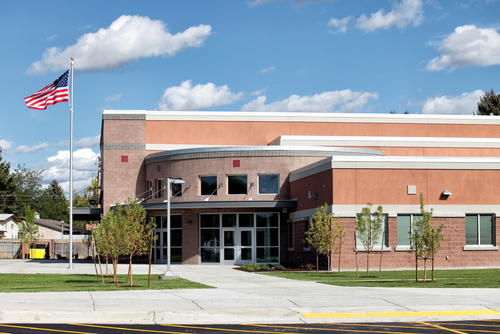In late 2022, the U.S. Department of Energy (DOE) launched the Renew America’s Schools federal grant program, enacted to set aside $500 million for energy-efficient lighting, HVAC systems, building insulation, and renewable energy sources for K-12 schools in need. The goal is for these major investments to lead to healthier learning environments and lower energy costs so school districts can equitably lead on the clean energy transition.

But while there has been increasing public pressure for this clean energy shift, a new study of 520 C-Suite, operations executives, and IT decision-makers shows that many in education still haven’t engaged. In fact, this study found that 69% of respondents say environmental, social, and governance (ESG) isn’t a high priority and 53% don’t have an ESG strategy in place at all.
It’s time for facilities managers to take action, and a strategic asset management plan will be key to making the most of government funding to make schools safer and more sustainable for all.
The Growing Importance of ESG and Sustainability
The DOE reports that schools and educational facilities spend an estimated $8 billion on energy annually, which translates to 72 million metric tons of carbon dioxide emissions and $270 billion in infrastructure repairs. Further, the American Society of Civil Engineers’ 2021 Infrastructure Report Card rated the nation’s school facilities in D+ condition, demonstrating the ongoing struggle to upgrade and maintain building systems that ensure facilities are free of health hazards.
The high cost of energy consumption often requires schools to invest in energy-related costs rather than other critical educational needs for students. And with communities demanding more sustainable public and private schools, and states and municipalities also starting to require—under strict penalties—increased transparency and action toward sustainability, balancing energy-related costs with other ongoing infrastructure needs will be crucial.
Smart asset management is one way that facilities managers can use data to better manage energy, workflows, and operations. With the right tools, facilities managers can gain insight into the state of their assets to use the data to better communicate with stakeholders about where to direct funds, resulting in safer and more efficient school buildings.
Laying the Groundwork for Smart Asset Management
It’s important to understand that sustainability is more than just replacing old machines—it’s about knowing where inefficiencies are happening. On top of the demand for building updates, there are also leakage costs associated with excess energy consumption in aging educational buildings, adding to the increasing expenses for educational infrastructure. In fact, the 2021 State of Our Schools report found that smarter facilities management could reduce capital investment on energy by 1%, amounting to nearly $28 billion every year.
Utilizing technology to gather real-time data on all aspects of facilities—from air conditioners and HVACs to heating systems—enables facilities managers to gain insight into the state of their assets, providing proof-points to support decisions about asset health. Beyond increasing transparency and communication with stakeholders, this data provides tangible details about where utility waste might be happening, which assets need to be repaired or replaced, and where to direct critical funds.
While relying on data can enable administrators to make confident long-term capital planning decisions and anticipate impact, it has the added benefit of enhancing visibility and transparency among constituents and communicating data with the public to regain confidence in school infrastructure. It’s this confidence in school leadership that will allow for truly sustainable change.
The status quo approach to asset management based on end-of-life expected timeline has shifted, and there are more options now for managers to explore that will result in increased energy efficiency. Using smart asset management can help facilities managers plan and budget for necessary preventative maintenance, leading to fewer breakdowns, less wasted energy, reduced costs, and improved overall operational performance.
Dan Arant is a Solutions Consultant Manager of Energy at asset management solutions provider Brightly, a Siemens company. Arant joined Brightly in 2013 and is a Certified Energy Manager through both the Association of Energy Engineers and the Institute of Energy Professionals.
